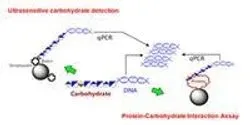All by Other Author
Filter by
AllArticlesAudioEbooksEventsInfographicsNewsProductsSurveysDocumentsVideosVirtual EventsWebinars
The human body has more than a trillion cells, most of them connected, cell to neighboring cells. How, exactly, do those bonds work? What happens when a pulling force is applied to those bonds? How long before they break? Does a better understanding of all those bonds and their responses to force have implications for fighting disease?
| 3 min read

Researchers at Rensselaer Polytechnic Institute have developed an ultrasensitive method for detecting sugar molecules — or glycans — coming from living organisms, a breakthrough that will make possible a more detailed understanding of cellular functions than either genetic or proteomic (the study of proteins) information can provide.
| 4 min read

Solar systems with life-bearing planets may be rare if they are dependent on the presence of asteroid belts of just the right mass, according to a study by Rebecca Martin, a NASA Sagan Fellow from the University of Colorado in Boulder, and astronomer Mario Livio of the Space Telescope Science Institute in Baltimore, Md.
| 4 min read

Laboratory personnel and lab directors can now earn one-half hour of Accent CE credit from the American Association for Clinical Chemistry (AACC) on-line by visiting www.stanbio.com/gobhb and clicking the Learning Center icon.
| 1 min read

Like a movie star constantly retouching her makeup, the protoplanet Vesta is continually stirring its outermost layer and presenting a young face.
| 4 min read









